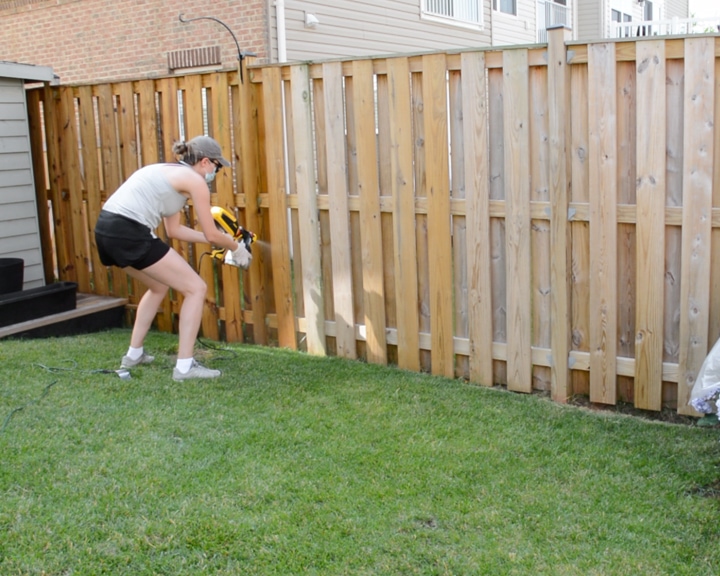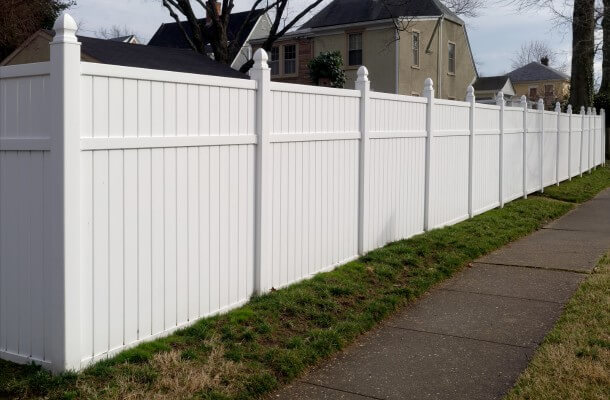To stain and seal your fence effectively, prepare the surface by cleaning and sanding it, choose the right stain and sealant for your climate, apply the products evenly, and protect nearby plants and surfaces. Before staining and sealing your fence, it is important to carefully prepare the surface to ensure the best results.
We will provide you with expert tips on how to effectively stain and seal your fence to enhance its appearance and protect it from the elements.
By following these guidelines, you can achieve a professional-looking finish while prolonging the lifespan of your fence.
Keep reading to learn more about the best practices for staining and sealing your fence.
Inspecting And Cleaning The Surface
When it comes to staining and sealing your fence, the first crucial step is inspecting and cleaning the surface.
This is essential to ensure the stain and sealant adhere properly, resulting in a long-lasting and attractive finish.
Remove Dirt, Debris, And Mildew
Before applying any stain or sealant, it’s important to thoroughly clean the surface of your fence. To remove dirt and debris, start by using a stiff-bristled brush or pressure washer.
Pay close attention to areas that are often overlooked, such as the bottom of the fence where dirt and moisture can accumulate.
Additionally, use a mildew clean to eliminate any mildew growth. Ensure that the entire surface is clean and free from any contaminants before proceeding to the next step.
Check For Damage Or Decay
Inspect the entire fence for any signs of damage or decay. Look for cracks, warping, or rot, which can compromise the integrity of the wood.
Address any issues by repairing or replacing damaged boards to prevent further deterioration.
By addressing these issues before staining and sealing, you can prolong the lifespan of your fence and maintain its structural integrity.
Choosing The Right Stain And Sealant
When it comes to standing and sealing your fence, choosing the right products is crucial for achieving the desired results.
Selecting the appropriate stain and sealant involves several factors, including the type of wood used for the fence, the desired color and transparency, and the level of protection needed.
Let’s delve into each of these considerations to ensure you make an informed decision.
Consider The Type Of Wood
Before selecting a stain and sealant for your fence, it’s essential to consider the type of wood the fence is constructed from.
Different wood species have varying levels of natural resistance to decay and moisture.
For instance, cedar and redwood are naturally durable and can resist decay without the need for chemical treatment.
On the other hand, pine and spruce are more susceptible to decay and may require a higher level of protection.
By understanding the characteristics of the wood, you can choose a stain and sealant that provides the necessary level of protection and enhances the natural beauty of the wood.
Selecting The Appropriate Transparency And Color
When selecting a stain for your fence, you’ll need to decide on the desired transparency and color. Stains come in different transparencies, including clear, semi-transparent, and solid.
Clear stains allow the natural grain and color of the wood to show through, making them ideal for showcasing the wood’s natural beauty.
Semi-transparent stains provide a balance between color and wood grain visibility, while solid stains offer the most coverage and color consistency.
Additionally, the color of the stain can significantly impact the overall appearance of your fence.
Whether you prefer natural wood tones or more vibrant colors, choosing the right stain color is essential for achieving the desired aesthetic appeal.
Applying The Stain
Applying the stains is a crucial step in the process of staining and sealing your fence. It not only enhances the appearance of the wood but also provides protection against the elements.
Proper application ensures a long-lasting finish that withstands weathering and wear.
Using Brushes, Rollers, Or Sprayers
When it comes to applying the stain, you have a few options to consider. Brushes are ideal for detailed work and getting into tight spots, while rollers cover large, flat surfaces more quickly.
Sprayers are efficient for large areas but require careful technique to avoid overspray.
Ensuring Even Coverage And Avoiding Overapplication
Regardless of the application method chosen, achieving even coverage is paramount.
Applying too much stain can result in an uneven finish, leading to premature wear and an unattractive appearance.
It’s important to follow the manufacturer’s guidelines for the correct amount of stain to apply.
Sealing For Long-lasting Protection
When it comes to maintaining the beauty and longevity of your fence, proper sealing is essential.
A high-quality sealant provides a protective barrier against harsh weather conditions, UV rays, and moisture, ultimately extending the life of your fence.
Understanding the types of sealants, proper application methods, and frequency are crucial factors in ensuring that your fence remains well-protected and visually appealing for years to come.
Understanding The Types Of Sealants
Choosing the right sealant for your fence is the first step toward achieving long-lasting protection.
There are two primary types of sealants: water-based and oil-based. Water-based sealants are eco-friendly, quick-drying, and offer UV protection.
On the other hand, oil-based sealants provide a deeper level of penetration and excellent moisture resistance.
It’s important to consider the specific needs of your fence, the local climate, and the environmental impact before selecting a sealant.
Proper Application Methods And Frequency
Proper application of the sealant is crucial for ensuring maximum protection. Before applying the sealant, ensure that the fence is clean, dry, and free from any previous coatings.
Applying the sealant using a brush, roller, or sprayer allows for thorough coverage and penetration into the wood.
Additionally, consider applying multiple thin coats rather than a single thick coat for better absorption and longevity.
The frequency of resealing your fence depends on various factors such as the type of sealant used, the climate, and the level of exposure to elements.
As a general rule of thumb, it’s recommended to reseal your fence every 2-3 years. However, regularly inspecting your fence for signs of wear and weathering can help you determine the appropriate time for resealing.
Regular Inspections And Upkeep
Regular inspections and upkeep are essential tasks when it comes to maintaining the long-term integrity and visual appeal of your fence.
By monitoring for wear and tear and performing touch-ups and reapplications as needed, you can ensure that your stained and sealed fence remains in top-notch condition for years to come.
Monitoring For Wear And Tear
Regularly inspecting your fence for signs of wear and tear is crucial in preventing minor issues from escalating into major repairs.
Check for areas where the stain and sealant may be fading or peeling, as these can leave your fence vulnerable to damage from the elements.
Look for any discoloration or water damage, especially in areas that are frequently exposed to sunlight or moisture. By catching these issues early, you can address them promptly and prolong the life of your fence.
Performing Touch-ups And Reapplications As Needed
Performing regular touch-ups and reapplications of stain and sealant is an integral part of maintaining the protective barrier of your fence.
Be proactive in addressing any areas with visible wear or damage by sanding down the affected areas, applying new stain and sealant, and ensuring that it blends seamlessly with the existing finish.
By staying on top of these touch-ups, you can prevent the need for more extensive refinishing or repairs down the line, ultimately saving time and money in the long run.

Frequently Asked Questions
Do You Stain Or Seal A Fence First?
It is best to stain the fence first to protect the wood, then seal it for added durability. The staining penetrates the wood while sealing provides a protective layer.
What Is The Best Method To Apply Stain To A Fence?
The best method to apply stain to a fence is to start by cleaning the surface thoroughly.
Then, use a brush or sprayer to apply the stain evenly, working in small sections. Make sure to follow the manufacturer’s instructions for best results.
Is It Better To Spray Or Roll Stain On A Fence?
For fence staining, spraying provides even coverage while rolling is best for texture. Both methods have their pros and cons, so it depends on your preference and the condition of the fence.
Consider factors like time, effort, and desired finish when choosing between spraying and rolling.
Conclusion
Staining and sealing your fence can protect it from the elements and enhance its appearance.
By following these tips and using high-quality products, you can enjoy a long-lasting and beautiful fence.
Regular maintenance is key to preserving the integrity of your fence, so be sure to prioritize this task throughout the years.








